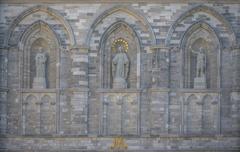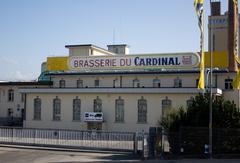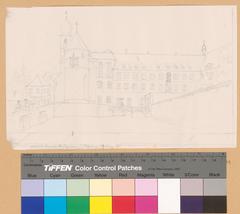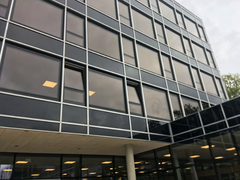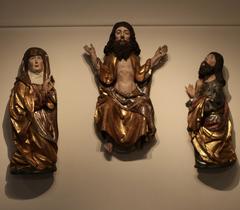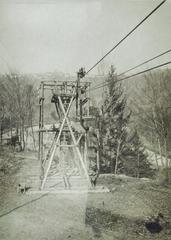
Visiting the Cistercian Abbey Magerau (La Maigrauge), Fribourg, Switzerland: A Comprehensive Guide
Date: 04/07/2025
Introduction
Nestled along the serene banks of the Sarine River in the historic city of Fribourg, Switzerland, La Maigrauge Abbey—also known as the Cistercian Abbey Magerau—stands as a remarkable testament to centuries of monastic tradition, architectural evolution, and cultural heritage. Founded in 1255 by a small community of women committed to the Rule of St. Benedict, it is one of Switzerland’s oldest continuously inhabited Cistercian convents. The abbey’s enduring legacy is reflected in its tranquil setting, its harmonious blend of Romanesque, Gothic, and Baroque architecture, and its active community of nuns who continue to uphold spiritual and artisanal traditions (La Maigrauge Abbey: A Historical Gem and Visitor’s Guide, Abbaye de la Maigrauge Visiting Hours, Tickets, and Architectural Highlights in Fribourg).
This guide provides detailed information on the abbey’s history, architectural and artistic highlights, visitor experience, practical details, and nearby attractions to ensure a fulfilling visit to this unique Swiss treasure.
Historical Overview
Foundations and Early Development (1255–14th Century)
La Maigrauge Abbey was established in 1255 by devout women seeking a contemplative religious life. Officially recognized in the same year, the community settled in a secluded valley, ideal for prayer and self-sufficiency. In 1259, Count Hartmann V of Kyburg granted the land, and by 1261, the abbey became a Cistercian foundation, dependent on the nearby Abbey of Hauterive.
Architectural Heritage and Artistic Treasures
The abbey’s church, dating from the late 13th century, remains the spiritual heart of the complex. Notable features include the beautifully carved 14th-century chancel stalls, a rare Gothic Easter Sepulchre sculpture (original now at the Museum of Art and History in Fribourg), and peaceful cloister gardens. The evolution of the abbey’s architecture—Romanesque origins, Gothic enhancements, and later Baroque additions—reflects the changing artistic and spiritual priorities over the centuries (Abbaye de la Maigrauge Visiting Hours, Tickets, and Architectural Highlights in Fribourg).
Periods of Challenge and Renewal
Throughout its history, La Maigrauge faced significant trials, including economic decline, the Protestant Reformation, and a devastating fire in 1660 that destroyed much of the wooden structures. Each time, the community rebuilt and renewed its mission, notably under the leadership of Abbess Anne Techtermann (1602) and later during 19th-century upheavals when anti-Catholic sentiment threatened the abbey’s survival.
The Abbey in the Modern Era
Today, the abbey is inhabited by a bilingual French-German community of nuns who maintain a rhythm of prayer, manual labor, and hospitality. Modern enterprises support the abbey’s self-sufficiency, including a bakery producing communion wafers, a biogarden, and a monastic shop selling herbal elixirs and crafts.
Architectural and Artistic Features
Key Structures
- Abbey Church (13th–14th Century): Retains its original single-nave plan, Gothic ribbed vaults, and remarkable chancel stalls.
- Cloister and Monastic Buildings: Rebuilt after the 1660 fire, the cloister offers a peaceful garden and access to communal spaces.
- Easter Sepulchre: A rare 14th-century polychrome wood sculpture, central to Holy Week rituals.
- Chapter House: One of the few stone structures to survive the 1660 fire, used for daily gatherings.
Artistic Details
- Chancel Stalls: Late medieval woodwork with intricately carved misericords, among Switzerland’s oldest surviving examples.
- Liturgical Furnishings: Simple altars and tabernacles in keeping with Cistercian principles of humility.
- Decorative Elements: Carved capitals and corbels with stylized foliage, symbolizing spiritual renewal.
Spiritual and Cultural Significance
La Maigrauge Abbey remains a living center of Cistercian spirituality. The nuns’ daily routine is structured around the Liturgy of the Hours, sung in both French and German, and open to visitors seeking a unique spiritual experience. The abbey is also committed to ecological stewardship, with organic gardens and beehives forming part of the community’s work (La Maigrauge Abbey Visiting Hours, Tickets, and Historical Significance in Fribourg).
The abbey plays a vital role in Fribourg’s cultural life, offering hospitality for retreats and providing artisanal products to the public. Its bilingual community exemplifies Switzerland’s multicultural heritage and commitment to interfaith and intercultural dialogue.
Visiting La Maigrauge Abbey
Location and Accessibility
- Address: Abbaye de la Maigrauge, Route de la Maigrauge 191, 1700 Fribourg, Switzerland
- Public Transport: Bus line 1 from Fribourg main station to “Maigrauge” stop, or a scenic 30–40 minute walk from the city center.
- Accessibility: The main paths and church entrance are wheelchair-friendly; some historical areas may have limited access. Contact the abbey in advance for specific needs.
Opening Hours
- Abbey Church: Open daily, typically 9:00 AM – 6:00 PM (check the official website for seasonal variations and special closures).
- Abbey Shop: Weekdays 9:30–11:30 AM and 2:30–4:30 PM.
- Grounds: Accessible during daylight hours.
Admission and Guided Tours
- Entry: Free; donations are appreciated.
- Guided Tours: Available in French and German by prior arrangement (CHF 10 per adult; discounts for students and seniors). English tours may be available upon request.
- Virtual Tours: Offered via the official website.
Facilities
- Restrooms: Available near the entrance.
- Picnic Areas: Visitors may bring a picnic to enjoy outdoors; no on-site café.
- Abbey Shop: Sells honey, herbal teas, baked goods, and religious items produced by the nuns.
Recommendations
- Dress Modestly: To respect the religious environment.
- Maintain Silence: Especially during services and in cloistered areas.
- Photography: Permitted in exterior areas; refrain from taking pictures inside the church.
Events and Special Experiences
- Liturgical Services: Visitors are welcome to attend daily prayers and Mass, featuring Gregorian chant.
- Holy Week: Special rituals using the Easter Sepulchre sculpture.
- Open Days: Occasional workshops on monastic crafts and herbal remedies.
- Cultural Events: Concerts and retreats throughout the year.
Nearby Attractions
- Fribourg Old Town: Medieval streets, the Cathedral of St. Nicholas, and city walls.
- Sarine River Heritage Trail: Scenic walks and cycling routes.
- Museum of Art and History: Houses the original Easter Sepulchre sculpture.
- Pérolles Lake and Nature Reserve: Opportunities for hiking and birdwatching.
Frequently Asked Questions (FAQ)
Q: What are the visiting hours of La Maigrauge Abbey?
A: The church and grounds are generally open daily from 9:00 AM to 6:00 PM. The shop has separate weekday hours. Always check the official website for the latest information.
Q: Is there an entrance fee?
A: Entry to the church and gardens is free; donations are welcome. Guided tours require a fee.
Q: Are guided tours available in English?
A: Tours are primarily in French and German, with English possible upon request or via virtual options.
Q: Is the abbey accessible for visitors with disabilities?
A: Most main paths and the church are wheelchair accessible. Some historic areas may be less accessible.
Q: Can visitors attend monastic prayers?
A: Yes, the sung liturgical services are open to the public.
Q: What products are available in the abbey shop?
A: Artisanal honey, herbal teas, jams, baked goods, crafts, and religious items.
Essential Visitor Information
- Address: Abbaye de la Maigrauge, Route de la Maigrauge 191, 1700 Fribourg, Switzerland
- Contact: +41 26 426 10 30 | Official Website
- Public Transport: Bus line 1 to “Maigrauge” stop
- Admission: Free (donations welcome)
- Languages: French, German; limited English
Tips for a Fulfilling Visit
- Plan your visit around a liturgical service for a unique spiritual experience.
- Purchase local products from the abbey shop to support the community.
- Combine your visit with a walk along the Sarine River or explore Fribourg’s historic center.
- Respect the monastic atmosphere by maintaining silence and modesty.
Summary
La Maigrauge Abbey is a living monument to Cistercian heritage, offering visitors a rare blend of historical depth, spiritual tranquility, and cultural richness. Its accessible location near Fribourg’s Old Town, inviting gardens, and welcoming community make it an essential destination for anyone interested in Swiss religious history, monastic life, or serene landscapes. For up-to-date details, always refer to the official abbey website and the Fribourg tourism portal. Enhance your experience with curated guides from the Audiala app.
Further Reading and Sources
- La Maigrauge Abbey: A Historical Gem and Visitor’s Guide to Fribourg’s Cistercian Treasure
- Abbaye de la Maigrauge Visiting Hours, Tickets, and Architectural Highlights in Fribourg
- La Maigrauge Abbey Visiting Hours, Tickets, and Historical Significance in Fribourg
- Abbaye de la Maigrauge Visiting Hours, Tickets & Guide to Fribourg’s Historic Cistercian Abbey
For more travel guides and updates, download the Audiala app and follow us on social media.



